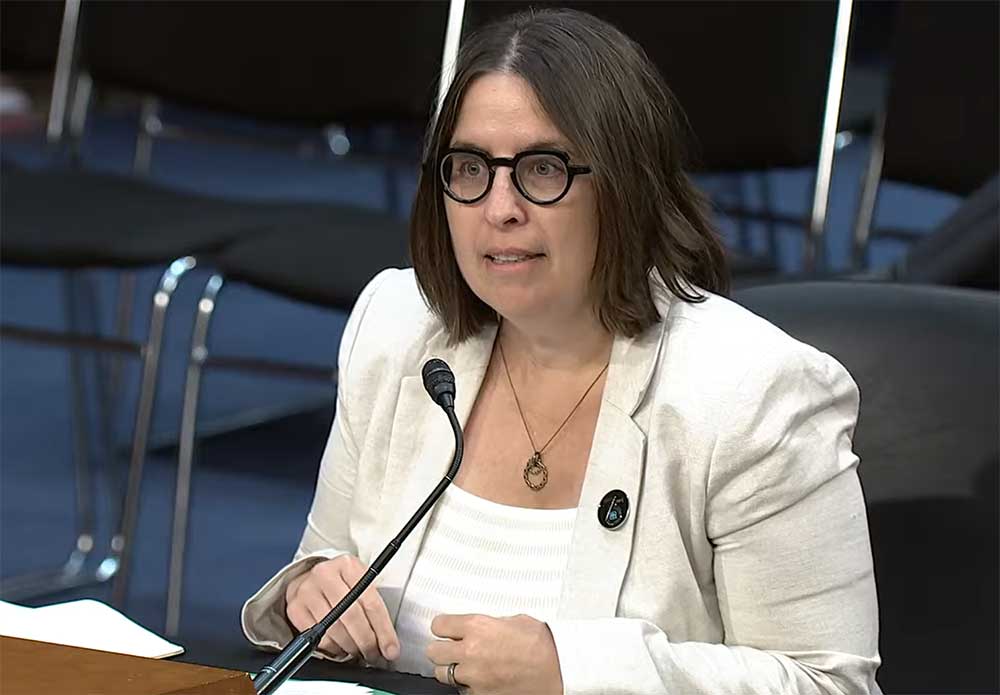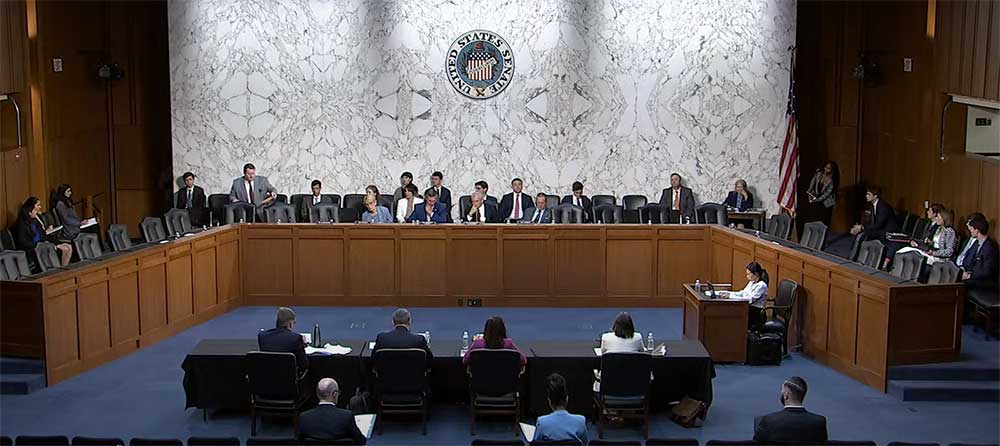Sandia scientist testifies how AI is helping with science innovation

Sandia’s Jennifer Gaudioso testified before Congress on how scientists at U.S. national laboratories are poised to elevate artificial intelligence to address some of the most complex scientific and national security challenges.
“The data is really at the heart of AI,” said Jennifer, director of Sandia’s computing research center. “We, as the scientists who discover and produce that data, know how to interpret it and how to curate it to make it AI-ready.”
Currently, large user-centered language AI models such as ChatGPT are widely available. During her June 4 testimony at the Joint Economic Committee hearing “Artificial Intelligence and Its Potential to Fuel Economic Growth and Improve Governance,” Jennifer explained how new AI models could be used to accelerate scientific progress.
“We know we can build much more exquisite and impactful models if we train them on the data we have in the Department of Energy. We need to train physics and chemistry models,” said Jennifer, a chemist by training. She described the research process of reading literature, combing through data, formulating hypotheses, designing experiments to test these hypotheses and iterating — a process that can take years.
“If we can test a chemistry model … with the trusted chemistry knowledge encoded in it, we can use that to make science go much faster and make connections that no human is ever going to make.”
AI at the Labs
In addition to expertise in science data, the national laboratories boast unparalleled expertise in advancing supercomputing capabilities. Sandia developed the first massively parallel processing supercomputer in 1990 and the supercomputer Red Storm in 2006. More recently, one of the Labs’ notable achievements includes the development of the Astra platform, a computer that marked a significant advancement by using ARM processors, technology commonly found in smartphones.
Sandia’s AI research dates back to at least the early 1980s. “The DOE national labs have researched AI for decades, with a focus on addressing critical challenges for the nation,” Jennifer said. “The labs are developing reliable and trustworthy AI-based solutions for critical areas.”

These areas include nuclear deterrence engineering, national security programs, nonproliferation, energy, homeland security needs and advanced science and technology. “The national labs’ long history of driving computing innovations, coupled with our strategic AI research focused on key applications, makes DOE and the labs invaluable partners for realizing AI’s full potential through secure, trustworthy high-performance systems,” Jennifer said.
This history continues today in a partnership between Sandia, Lawrence Livermore and Los Alamos national laboratories with Cerebras Systems to explore the application of their Wafer Scale Engine technology to the simulation and AI needs of DOE. Jennifer said the team recently ran molecular dynamic calculations 179 times faster than the world’s leading supercomputer.
“This required both innovations in hardware and software. This remarkable advancement has the potential to revolutionize material science and drive scientific discoveries across various domains,” Jennifer told the committee.
FASST initiative
During the National AI Expo in May, DOE announced the Frontiers in Artificial Intelligence for Science, Security and Technology, or FASST, initiative. It focuses on using AI to maintain U.S. competitiveness and help solve global challenges. Sandia was one of 10 national labs that showcased its work in AI at the conference. Read more about Sandia’s AI initiatives and watch Jennifer’s testimony here.